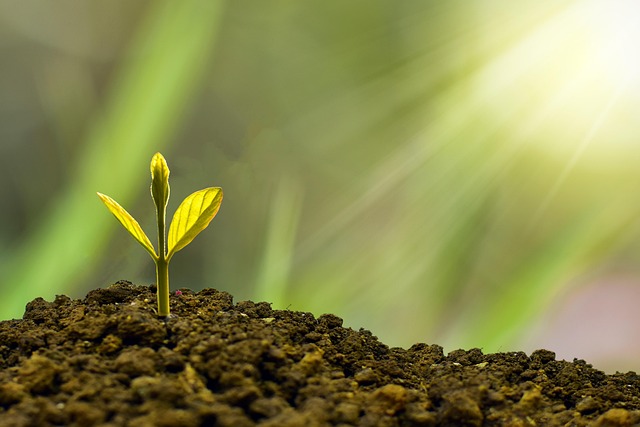Bioplastic Innovation Reducing Ecological Footprint Through Carbon Neutral Green Tech
Innovation in materials science is no longer just a buzzword; it is a necessity for a planet that is rapidly depleting its natural resources. Among the most promising advances is the development of bioplastic—a polymer derived from renewable biological sources that offers a viable alternative to conventional petroleum‑based plastics. This article explores how bioplastic technology is reshaping sustainable development, shrinking ecological footprints, and integrating carbon‑neutral practices across production and consumption cycles.
From Biomass to Bio‑Polymer: The Birth of Bioplastic
Bioplastic originates from agricultural crops, algae, or waste biomass, harnessing the natural polymeric structures found in plant cell walls. Unlike traditional plastics that rely on fossil fuels, bioplastic production uses processes that can be powered by renewable energy, thereby reducing greenhouse gas emissions from the outset. The key to its success lies in a closed‑loop system where feedstock cultivation, polymer synthesis, and end‑of‑life disposal are all designed to minimize carbon inputs and outputs.
Carbon Neutrality in the Life Cycle of Bioplastic
Achieving carbon neutrality requires a holistic approach. During cultivation, crops absorb CO₂ through photosynthesis, offsetting emissions that would otherwise accumulate in the atmosphere. Subsequent fermentation or catalytic conversion to monomers can be powered by solar or wind energy, ensuring that the energy inputs remain minimal. The final stage—degradation or recycling—often returns carbon to the soil or transforms it into harmless gases, closing the loop.
“When the entire chain is designed for carbon neutrality, bioplastic isn’t just a green alternative—it becomes a net carbon sink,” notes Dr. Elena Ramirez, a leading researcher in sustainable polymers.
Reducing Ecological Footprint: Metrics and Impact
Traditional plastics contribute significantly to ecological footprints measured in terms of land use, water consumption, and energy demand. Bioplastic, by contrast, demonstrates lower intensity across these dimensions:
- Land Use: Many feedstocks such as corn or algae require less arable land per kilogram of polymer produced.
- Water Consumption: Cultivation practices for bio‑polymer crops often incorporate drought‑tolerant varieties, reducing irrigation needs.
- Energy Demand: Fermentation processes can operate at ambient temperatures, decreasing the energy required for heating and cooling.
Case Study: Bioplastic in Packaging
A major beverage company partnered with a bioplastic manufacturer to replace 40% of its single‑use bottles with a polylactic acid (PLA) variant. The switch cut CO₂ emissions by 30% per bottle and eliminated approximately 200,000 metric tons of plastic waste over five years. Additionally, the PLA bottles were fully compostable, enabling local municipalities to incorporate them into municipal compost streams, thereby returning nutrients to the soil.
Integrating Green Technologies: Beyond the Material
Bioplastic’s promise is amplified when paired with complementary green technologies:
- Solar‑Powered Production: Photovoltaic arrays supply clean energy to fermentation units, eliminating fossil‑fuel dependence.
- Bioreactors with Algal Cultivation: Algae not only produce feedstock but also capture CO₂ from industrial exhaust streams.
- AI‑Optimized Supply Chains: Machine learning models predict crop yields and material demand, reducing waste and surplus.
Regulatory Landscape and Market Dynamics
Governments worldwide are adopting stricter regulations to curb single‑use plastics. Incentive schemes, such as tax credits for bioplastic production and mandatory labeling of biodegradable content, are accelerating market penetration. Simultaneously, investors are increasingly focusing on environmental, social, and governance (ESG) criteria, which position bioplastic enterprises as attractive long‑term assets.
Challenges on the Horizon
Despite its advantages, bioplastic faces hurdles that must be addressed to scale sustainably:
- Competition for arable land with food production.
- Variability in feedstock quality leading to inconsistent polymer properties.
- Infrastructure gaps for proper composting or recycling of bioplastics.
Overcoming these challenges requires coordinated efforts from policymakers, academia, and industry to develop standards, improve agronomic practices, and expand waste‑management infrastructure.
Future Outlook: Bioplastic as a Cornerstone of Sustainable Development
Looking ahead, the trajectory of bioplastic innovation is poised to intersect with several emerging trends:
- Hybrid polymers combining bioplastic with nanocellulose for enhanced mechanical strength.
- Genetic engineering of crops to yield higher monomer yields and lower water footprints.
- Integration with circular economy models where bioplastic waste fuels renewable energy production.
These advancements signal a shift from a linear ‘take‑make‑dispose’ paradigm to a regenerative system where every component—from raw material to end product—contributes to ecological restoration.
Conclusion: The Path Forward
Bioplastic stands at the intersection of technological innovation and environmental stewardship. By leveraging renewable feedstocks, carbon‑neutral production processes, and green technologies, it offers a scalable solution to reduce ecological footprints across industries. The collective responsibility of governments, corporations, and consumers to invest in and adopt these materials will determine whether we can achieve lasting sustainability and a healthier planet for future generations.



